Canyoning (or “canyoneering” in the US) uses some techniques found in hiking, climbing and caving. However, canyoning is a unique sport in some aspects, such as the environment (which can change quickly) or the specific equipment required. This article will help you choose the essential gear for getting started in canyoning.

Canyoning is stunning and recreational, but also very technical.
Canyoning has been a very popular activity for several decades. It can be easy and fun, providing you choose a suitable descent, and with basic techniques and little gear you can enjoy a very entertaining sport. However, canyoning takes place in a very changeable environment. Depending on the time of year or the precipitation regime, the canyon can change from having a gentle water flow to a high level of icy water or in just a few days change from being an impractical descent to experiencing a drought, resulting in a dry riverbed. With these variables, it is easy to see how the equipment for such an environment is very dependent on the conditions at that particular time.
To many, this activity does not appear to be technically difficult since it only requires knowledge on how to rappel. However, experienced canyoneers will tell you that this is only true in a few canyons and in very particular low water conditions. Most canyons are more complicated and require knowledge of numerous, varied maneuvers, as well as on how to interpret water movement and other inherent dangers during the descent. We recommend this video on the tight rappel published some time ago to provide information on one of the most common maneuvers in canyoning today.
Some canyons, in low water conditions, require only a minimum amount of equipment, if they are descended quickly and providing you have the technical ability for the level of that particular canyon. Others however, change dramatically in high waterflow conditions and may require all kinds of material to undertake the descent safely. For this reason, it is essential to be informed of the conditions before each descent, to have the know-how and experience to assess it correctly and to have the right equipment and be physically fit enough to get the most enjoyment from this beautiful and fun sport. We also recommend humility and know how to abandon the descent if need be or hire guides to ensure maximum safety.
As we said, it is difficult to recommend a single list of equipment for all types of canyoning. The type of material and its features vary according to the type of descent. However, some essentials required for this activity are basic:
- Wetsuit.
- Grippy footwear.
- Backpack with drainage ports and watertight barrel.
- Canyoning harness.
- Descender, lanyards, screw-lock carabiners
- Semistatic rope.
- Helmet.
In addition to this basic material there are other essential items, which we will explain at the end of the article. For now we will take a look at the items on this list.
Clothing
From the first canyoning descents until well into the 1980s, wetsuits were a fairly exotic piece of gear. It was more common to use thick clothing or an inflatable dinghy to protect against the cold water or stay out of it as much as possible. When there was no choice but to get into the water, hypothermia became a serious problem.
Soon wetsuits for underwater diving became popular and although they were not perfect for canyoning, they provided a level of thermal comfort unheard of until then. These wetsuits were uncomfortable for walking or climbing down rocks and had barely any reinforced areas. It was not long before they were replaced by wetsuits designed specifically for canyoning
Neoprene
Neoprene, technically chloroprene polymer or polychloroprene, is a relatively old material (almost a century since its discovery). It is flexible, resists torsion and does not degrade easily in the sun, heat or with chemicals.
The function it has in canyoning is to allow a millimeter layer of water to enter, which is instantly heated by the body and this insulates, providing the layer of water is not renewed by continuous inflows and outflows of new water. For this reason, it is important that the fit is tight enough to keep water renewal to a minimum, but comfortable enough to allow mobility.
In order for the neoprene to fulfill its function, the zippers should be closed when entering the pools and there should be no holes which would allow water to escape or enter. The hood is not usually used and also completely prevents us from hearing, but it is very useful in extreme cold conditions.
Neoprene is indispensable in aquatic conditions for two main reasons:
- Thermal Insulation: You may associate canyoning in good weather with being warm, but hours spent in the icy water of a canyon can cause serious hypothermia.
- Protection: It provides exceptionally useful cushioning for the numerous knocks and blows on your shins, knees, shoulders, etc. In case of an accident, it also allows a certain amount of immobilization of the damaged area and keeps the injury stable.
In addition, due to its structure and construction, a neoprene wetsuit greatly favors buoyancy, making it easier to float in a pool or let the current carry you along.

Two-piece wetsuit for aquatic canyoning
There are two basic types of wetsuits: two-piece wetsuits (bib-pant and jacket) or one-piece wetsuits. Choosing one or the other will depend on the activity and personal preference:
- One-piece wetsuit: usually more comfortable and lighter, it is also somewhat less insulating and less versatile. It is usually a suitable option for fast activities.
- Two-piece wetsuit: the most popular option. Highly versatile, it can be used without a jacket in the case of less aquatic canyons and only one of the pieces need be changed if it has deteriorated. The torso area combines the thickness of the bib with that of the jacket for enhanced thermal insulation.
Regarding the thickness, cold mountain waters usually require 5 mm thick neoprene, although it is also common to find 3 mm if it is to be used in warmer water conditions or for fast activities. Certain models use thinner neoprene in the legs and arms for enhanced mobility when swimming, walking and rappelling, and also feature a preformed design to reduce the stiffness of this material when it is tight.

Winter canyoning. Do not skimp on the thickness of the neoprene.
Sometimes, it is common to combine a bib-pant with a kayak jacket if you are not going to submerge but you would have to avoid splashing water while rappelling. The use of jackets with thinner neoprene is gaining popularity and both the kayak jacket or thin neoprene jacket are very comfortable alternative options in low waterflow or for those less prone to the cold. At the other end of the spectrum, there is also a recent trend towards the use of drysuits for very cold conditions.
Underwear
The wetsuit provides very beneficial insulation for this activity, but such tight clothing can often cause chafing. Wearing loose clothing underneath the wetsuit will cause greater damage to your skin as wrinkles will form with moisture and pressure.
For this reason it is essential to wear specific clothing. Tights or tight-fitting swimsuits under the pants and undershirts adapted to canyoning are essential to avoid suffering on long descents. In addition, placing a thin intermediate garment between your skin and the wetsuit allows you to wash that garment, rather than the wetsuit, which is often a nuisance, due to its volume.
Neoprene Socks and Gloves
Neoprene socks, are essential because, no matter how little water there is in a canyon, your feet will nearly always be submerged. The cold and icy waters of a canyon mean that your feet are one of the most sensitive points and, therefore, require special protection.
Like the wetsuit, socks are usually made of 5 or 3 millimeter neoprene. 5-millimeter socks are more insulating, but reduce sensitivity. As they are not very breathable, it is not advisable to wear them on long approaches to the start of the canyon, due to the problems caused by permanent sweating and intense heat.

Neo 3 socks
Gloves are especially useful in cold water, and prevent your hands from going numb with cold during technical maneuvers. Do not forget that your hands will be wet for hours. Gloves provide a lot of security during rappels.
Footwear
It seems absurd to have to remember that in a river, ravine or torrent, the wet surfaces, the smooth river bed, polished by erosion and covered by mud, moss or algae can frequently cause slipping. However, specific footwear for canyoning is one of the most neglected pieces of equipment and it is not uncommon to see someone facing a descent wearing old shoes, with worn soles or with first-price models which are not adapted to this type of terrain.
We can therefore not stress enough, the importance of using specific footwear for canyoning. It is the only kind of footwear that offers enough grip on the different conditions of washed and wet rock; a lethal combination for grip. Many canyoning accidents are caused by slipping.

Bestard Canyon Guide, canyoning boots
It is not only the sole and grip that are important features on a descent; the entire boot is prepared to protect your feet, so that they can withstand the difficult conditions of the aquatic and rocky system. It has the difficult mission of protecting the ankle while allowing enough mobility to perform the skills safely. It is difficult to believe that such models exist, but the specific models for this activity are carefully designed to provide this function.

Wet and steep terrain. Grip and adherence are essential.
There are several types of closure systems, but lacing systems should have protection, such as a pocket or flap to prevent snagging at the most inopportune moment or, in the worst case, cause the boot to become untied which can result in it slipping off only to be swept downstream.
If such specific footwear is not available, an alternative should, at least, provide a very good grip on all types of terrain.
Watertight Backpacks and Drums
Few items of mountain equipment suffer as much as a canyoneer's backpack. Knocks, scrapes and throwing it into the void are a few examples of what a pack has to endure. A backpack is essential for carrying your equipment, but it can also put you in danger during jumps, eddies, siphons, etc.
Not just any backpack will do for canyoning. It has to be durable and specifically designed for this activity. Its main requirement is drainage (water perforation ports) to allow water to drain out of the pack when getting out of a pool and made of non-absorbent material. It is true that a waterproof backpack can also be used for gentler activities such as river hiking, but for now, the level of durability and watertight capacity leave much to be desired.
It is also essential that the pack is smooth and does not have external straps, especially on the sides, to prevent snagging. A normal backpack with straps and hooks, in addition to the obvious problems that will arise from not being designed for use in water, can cause trouble in case of excessive waterflow. Likewise, it is important that the straps of the backpack can be released quickly in case you are caught in a dangerous waterflow.

Rodcle Consusa 45 litre canyoning pack
The fundamental mission of a watertight barrel is to ensure that your personal equipment (cell phone, keys, documentation, etc.) stays dry, but it has another equally important mission: it facilitates the buoyancy of the backpack. If the contents are fragile, they should be protected from impact during the descent, by wrapping them in clothing or some kind of padding.
Most people choose a 6 liter capacity watertight barrel if carrying clothes or a microfiber towel, but for summer use, a 3.6 liter waterproof barrel is usually large enough for a first aid kit, keys, cell phone, documentation and some food. If you need to carry bulkier gear such as an electric drill you would have to opt for a 15 liter watertight barrel or even larger.
Canyoning Harness
It seems that no piece of outdoor equipment governed by just one single standard has greater diversity than the harness. We have already spoken about the variety and features in this article and we invite you to read it again.
It is curious that the UIAA 105 and EN 12277:2015 standards do not differentiate between the harness requirements for such diverse activities, such as climbing, canyoning, caving or ski touring. Fortunately for our safety interests, the regulations are demanding in terms of strength. However, they are very open in terms of design.
For this reason, canyoning harnesses, which are rarely subjected to heavy falls, except for an escape maneuver or handline setup, comply with the same strength requirements as a sport climbing harness which is constantly at risk of a possible fall.
However, there are still several reasons why you should look for a specific harness for canyoning:

Petzl Canyon Guide, canyoning harness
- They have a high, reinforced anchor point, which will allow you to remain in a vertical position, when suspended. This is especially important when under waterfalls, where the force of the water can cause dangerous rolling.
- They have awide waist and leg loops for good support during frequent rappel maneuvers.
- They have low-padding for two reasons: it is not necessary when used with a wetsuit and it prevents water absorption which would increase its weight.
- They have durable reinforcements to withstand the high level of friction. And can be worn with a seat protector, which is essential and is usually removable.
Helmet
A helmet is without doubt, essential for canyoning. It is not only important because of what can fall from above, dragged by the current, but also because of how common it is to slip or trip in an environment with such irregular and slippery terrain.
For more information on the importance of the helmet and how to choose the right one, you can read this article on climbing and mountaineering helmets
The CE EN-12492 regulations for climbing and mountaineering helmets, are demanding in terms of impact resistance at the top of the helmet. However, we recommend that the helmet you choose for canyoning offers all-round protection. The reason for this is due to the type of falls that can occur and the high risk of falling head first. We also wrote an article about helmets with wrap-around protection that you may be interested in reading.
We must continue to insist that helmets for other disciplines such as cycling or whitewater are not recommended for canyoning, which requires protection against impact, falling objects and is lightweight. Thankfully, such helmets are less popular than a few years ago.
Ropes
Although dynamic ropes can be useful for securing the setup of handlines or for builiding an escape route from a canyon, as well as for use as emergency ropes, it is important to specify that the use of dynamic ropes for rappelling in canyons is strongly discouraged. The fibers can be cut, there is inevitable rope stretch and abrasion caused by changes of position to avoid a waterfall, for example. The old, wet and frayed climbing ropes sometimes seen in canyons are an accident waiting to happen.

Double rappel with semistatic rope
It is important to always choose semi-static ropes for canyoning. In recent years the most usual diameter is 9mm, although there is a wide range of use between 9 and 10 millimeters; ropes over 10mm are rarely used except by canyoneers looking for extra braking capacity, for enhanced safety in case of excessive abrasion or for heavier users.
Some people think that static ropes should be used for both canyoning and caving. This is not correct; this belief stems from the error of calling semi-static ropes static ropes. Purely static ropes are rarely used, except for very specific situations such as rescue, load lifting or the assembly of zip lines, Tibetan bridges or other maneuvers in which the rope is subjected to great tension. Most people refer to a rope that is not dynamic as static, when in reality they are referring to is semi-static rope.
The length of the rope is impossible to specify in this article, as it depends on the type of canyoning route. You should always carry two ropes that are at least as long as the longest rappel on the route. There are certain maneuvers for getting round the problem if a rope is too short, but in general the length of the rope should coincide with the longest rappel.
We can say that, in general, with two 50-meter ropes, you will be able to face most canyons, although there are always exceptions, of course. To avoid having to always collect all the rope at each rappel it is usually a good idea to use a rope bag like the Rodcle Sera that allows you to remove just the length of rope required and, among other advantages such as preventing knots from forming, it also helps us by only having to retrieve the length of rope used for the rappel.

Rappel with rope bag
In this article, How to choose your climbing rope, we explain this and many other interesting questions.
Due to the wear and tear suffered by canyoning ropes, you may also be interested in this article on washing and care of ropes where we explain how to take care of the rope and how to make it last longer.
Anchoring and Descending System
When you reach a rappel point, the first action is always to clip into the anchor, and the last is to unclip from the anchor. While preparing the maneuver you should never be unattached from the anchor. Failure to comply with this basic rule has been the cause of multiple accidents.
Double Lanyard
Use a home-made one with two meters of 9mm dynamic rope and a Slyde plate or buy one ready-made. Lanyards are a basic element on the harness of any mountaineer, but especially of a canyoneer, where a slip at the top of an abseil cannot be an option.

Lanyards while preparing the rappel maneuver in hanging installation
A double lanyard should be chosen, given how common it is to find access lifelines to the rappel station. In this way you will always be able to safely pass intermediate points or anchor yourself with a rope to the rappel stations without having to unclip from the lifeline first. It is highly recommended that one end of the lanyard is adjustable so you can choose the most comfortable distance while performing the different maneuvers.
Descenders
The figure-of-eight descender gives the best results for canyoning due to its performance, ease of use and price. It’s quick to attach to the rope, but its main advantage is that the rope can be passed through the descender without having to remove it from the carabiner.
Specifically designed descenders for canyoning featuring various braking positions depending on the rope diameter, weight, technique, desired speed and other parameters, offer experienced canyoneers a wider option for this activity.
However, it is always a good idea to carry a spare figure-of-eight for alternative maneuvers such as the releasable rappel or the "canyon style figure of eight" and should be a mandatory piece of equipment on every canyoneer’s harness.

Kong Oka, canyoning descender
Locking Carabiners
Locking carabiners for canyoning should always have a screw-lock system, as there is less danger of blockage in the event of dirt entering the safety system or having limited finger mobility due to the cold, for example.
Normally one HMS carabiner is used for the descender and two more for the lanyard, although depending on the maneuvers and amount of gear carried, the number of carabiners can be much higher.

CAMP Core Lock, screw lock carabiner
There are two topics that may well interest you on this subject: the article on all types of carabiners and how to choose them and the article on care and maintenance of all mobile metal mountain equipment to make your carabiners last longer and keep them in better condition.
Other Indispensable Elements
So far we have listed and briefly described the basic equipment for canyoning. With the above equipment, you could descend a canyon in any condition... as long as you do not encounter problems such as a stuck rope, unusable fixed gear or having to use danger signals.
First Aid Kit and Thermal Blanket
A small first aid kit in your watertight drum barely weighs anything and you won't notice it. In fact it can be left in the drum and taken out now and again to check that the medicines haven't expired. It should include the basics for healing scrapes, cuts, bug bites and allergies.
It is also essential, not only for canyoning but for any mountain activity, to carry a thermal blanket to protect those immobilized by injury from the cold (or heat). Some people even add duct tape to the thermal blanket to create a totally enclosed space and create a warm spot by simply lighting a candle.
Knife
A knife can save you from a scare caused by a stuck rope. It can also be used to quickly replace a rope or webbing installation.
A canyoning knife should always be folded and kept in an accessible place and have a carabiner attachment for clipping it to your harness.
Whistle
Oral communication between two people separated by a waterfall is impossible. The noise of free-falling water amplified by the narrowness of a ravine or gorge prevents you from hearing even your own thoughts.
If you need to say something to your partner, you need to have a code based on hand signals, radio transmitters or, in the height of simplicity, a whistle with a code learned by the members of the descent group. A whistle that can be clipped to your helmet or elsewhere is an inexpensive and tremendously useful tool.
The beep code (one: stop, two: free, three: down) is usually the most common and recognized, although there are variants of this code that should be clarified before starting the descent.
Food and Hydration
Sometimes, long approaches to and from the canyon, along with itineraries that are much longer than expected due to higher water volume, or overcrowding, can lead to running out of water or hunger if you have not foreseen this situation.
Fortunately, gels and bars, in addition to providing a good dose of energy, add little weight to a canyoneer’s pack. By choosing the right product (instant energy, long-lasting energy, post-exercise...) you can keep up your energy level from start to finish.
Something similar happens with hydration. The heat during the approach and lack of breathability of the wetsuit can cause dehydration and result in you finishing your supply of drinking water earlier than expected. It’s not always possible to find a natural spring on the descent and you may have to make the water drinkable to avoid going thirsty.

A natural spring during the descent. Not always present or active.
It is a cruel paradox to feel thirsty in a riverbed, but the proliferation of dangerous microorganisms in the water discourages drinking water without first treating it. The existence of water purification tablets alleviates the need for liquid but they have two major problems: they do not allow immediate consumption and leave a chemical taste in the water.
The appearance of personal filtering systems has been a great advantage for canyoners, who always have water at their disposal. Simple to use and instantaneous results mean there are no drawbacks compared to traditional chemical systems. The Katadyn Befree system was a revolutionary product and later the Salomon filter or similar, which can be coupled to a softflask for immediate drinking, has also helped to avoid going thirsty in a canyon.
On water purification methods, take a look at this article on the different water purification systems.
Fixed Gear
We have already mentioned the changeability of a medium such as a canyon. From one day to the next, or even in the course of a few minutes, the volume of water can increase in a spectacular and disturbing way.
Flash floods, especially those that affect the narrowest sections of a descent, often affect the fixed gear, which is often submerged and is hit by rocks and trunks dragged by the flooding water.

Stainless steel expansion bolts, hangars and ring with different levels of deterioration.
For this reason, on infrequently used or early season descents, it is a good idea to carry spare gear. Sometimes, changing a sling, quick-link or cord is enough, but other times you need to have anchor installation gear at hand and, of course, know how to use it.
Despite the fact that current electric drills usually perform well and are not too heavy or bulky, in an aquatic environment such as a canyon it is still more effective to carry the traditional material: a hand drill, drill bit and mallet, plus, of course, anchor hardware such as expansion bolts and ring hangers.
.
We insist from here on the importance of using quality material and on installing it correctly. Let's not forget that, after you, more people will hang from these installations and they will assume that everything has been done correctly. Always use stainless steel for the whole fixed anchor system and do not experiment in crowded places if you do not have enough skills.
We hope this article has helped you learn something new or refreshed what you already knew. Remember that, in addition to the right equipment, technical training is essential to safely tackle any outdoor activity.




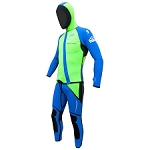
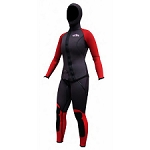
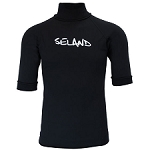





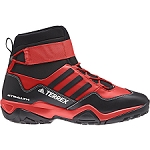

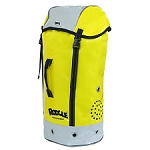


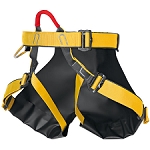
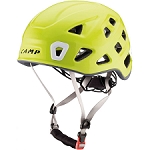








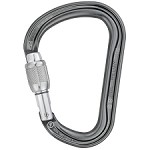
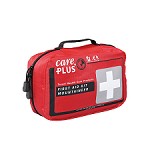


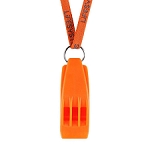




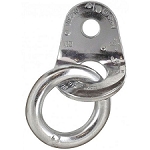




Leave a comment
Be the first to comment on this article.